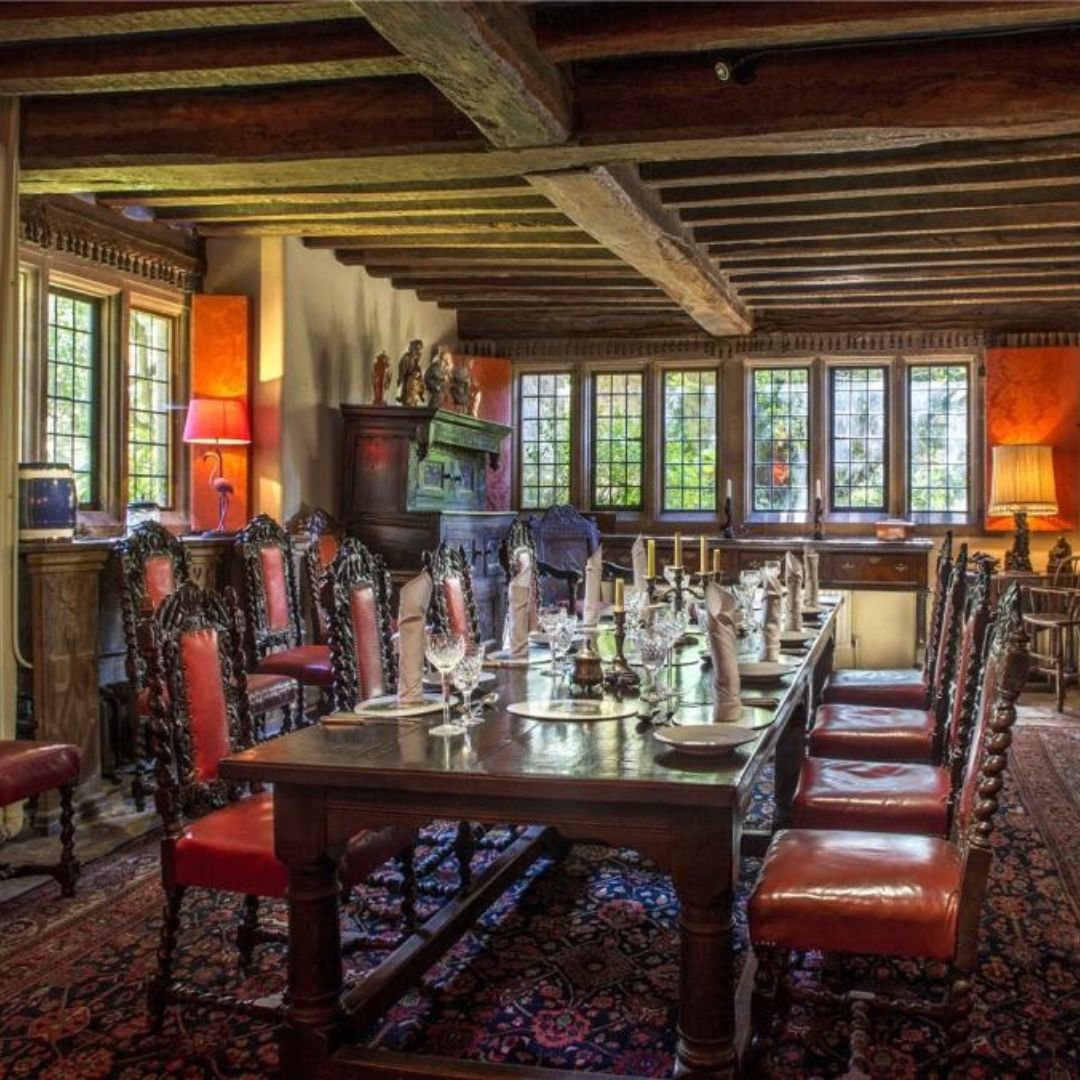Long Crendon Manor: 835-Year-Old Grade II Listed Gem
Long Crendon Manor is a stunning 835-year-old medieval house steeped in British history.
The Grade II listed property, on the market for £7 million, has direct links to both the Battle of Hastings and to the Magna Carta.
Approached via an ancient archway, Long Crendon Manor wraps three sides around its central courtyard and is a quintessential and striking example of medieval architecture.
Sir Walter Giffard (d.1102) was right-hand man to William the Conqueror at the Battle of Hastings and was awarded the Manor of Long Crendon for his part in defeating King Harold.
William Marshal, known as "The Greatest Knight", was Lord of the Manor of Long Crendon and was one of the 25 barons to force King John to put his seal on the Magna Carta.
Long Crendon Manor began as a dwelling for the abbots of Notley in about 1187.
From the original Great Hall the house developed with the East wing added in the 14th Century and the West wing in the 15th Century.
Under the ownership of Laline Hohler, daughter of Lady De L'Isle of Dudley and Penshurst, over 1920 and 1921 the house was restored and extended by the renowned architect, Phillip Tilden, who went on to restore Chartwell House for Sir Winston Churchill.
Long Crendon Manor has now for the last 40 years been under the same family stewardship and continues to develop as a working estate.
Originally the Great Hall was a dwelling for the abbots of Notley from about 1187.
The east wing was added in the 14th century and the west wing in the 15th century.
The house has now been under the same family stewardship for the last 45 years and continues to develop as a working estate.
The historic oak front door shelters within the stone porch and forms a fitting entrance to the oldest part of the house.
The stone flagged hallway leads on to a rear door opening directly to the magnificent view of the gardens and far-reaching views of The Chilterns beyond.
The beautifully proportioned drawing room, with its heavily beamed ceiling, oak panelled walls and large stone fireplace, leads off the hallway.
From here, doors open to two separate staircases rising to the first floor.
A third door leads on to the welcoming library, where there is a fine example of linen press panelling surrounding the fireplace, with a painted frieze detail.
The striking and impressive Great Hall, with its stone flagged floor and vaulted ceiling, has three bays. It displays majestic oak trusses to the eaves and a huge medieval fireplace.
Tilden created a Minstrels’ Gallery at one end of the hall and adapted the design of the fireplace.
This has allowed for pleasing giant log stores on either side.
The present owners commissioned bespoke carved oak covers for the large cast iron radiators, which sit comfortably in this historic room.
The pink walls, a reminder of one of the films it has played host to in the past.
From here, doors open to the large dining room with its cobalt blue ceiling, pink silk-covered shutters, fireplace and bespoke Jacobean style sideboard.
It is a wonderful room to entertain friends and family. Another door from the Great Hall opens to an oak panelled inner hall.
This, in turn, leads on to a long corridor arriving at the back door.
The present kitchen, with its gas fired Aga, butler’s pantry (with silver cupboard), scullery and estate office, leads off the corridor.
This area (previously the servants’ hall) presents an exciting opportunity, subject to planning consents, to create a large living, family and kitchen space, with views out to both the orchard and courtyard either side.
From the drawing room a staircase leads to, Laline’s Room, with oak floorboards, large oak trusses and column and a big fireplace housing a large Clearview wood burning stove.
Steps lead up to an en suite bathroom. Colonel Barry’s bedroom and dressing room are accessed via both staircases, with an en suite shower room off and a sunken bath.
From here stairs rise up to an attic room and down to the Minstrels’ Gallery where a small study is situated, over the entrance porch.
Off the east end of the Great Hall, a staircase leads up to a long corridor where there are two further bedroom suites, both with dressing rooms and bathrooms.
Four further bedrooms (one with an en suite), a family bathroom, large games/ snooker room and linen and laundry room.
At the end, a galleried landing leads to the extraordinary and atmospheric Tower Bedroom which sits over the main entrance arch.
A large stone fireplace rises to the ceiling with carved detailing, also with a large Clearview stove. Huge oak trusses support the oak beams and wide boards forming the eaves.
There are three further attic rooms on the second floor.
Attached to the house, but providing self-contained accommodation are the ground floor Archway Flat, a one bedroom flat and The Gatehouse, a two bedroom cottage with its own private garden.
The gardens and grounds provide a ‘theatrical’ backdrop to Long Crendon Manor.
The picturesque, thatched summer house enjoys the views beyond. The winter house, complete with fireplace, is tucked away.
A maze, with a charming fountain at its centre, the library walk, croquet lawn, ancient mulberry tree, ha-ha and virginia creeper covered gazebo all add to the enchantment.
Added to the mix are a thatched witchert wall, yew topiary, large enclosed vegetable garden, kitchen garden, orchard, tennis court and pool.
The garden interconnects via yew and beech lined paths.
A row of limes border a small copse on the edge of the ha-ha. Recently, a block of 4 stables have been added behind the tennis court, overlooking the paddocks.
Including the land and garden, the estate is c. 39 acres in all.
The property was recently on the market for £7 million.
If you enjoyed this blog post, please follow Exploring GB on Facebook for daily travel content and inspiration.
Don’t forget to check out our latest blog posts below!
Thank you for visiting Exploring GB.



















